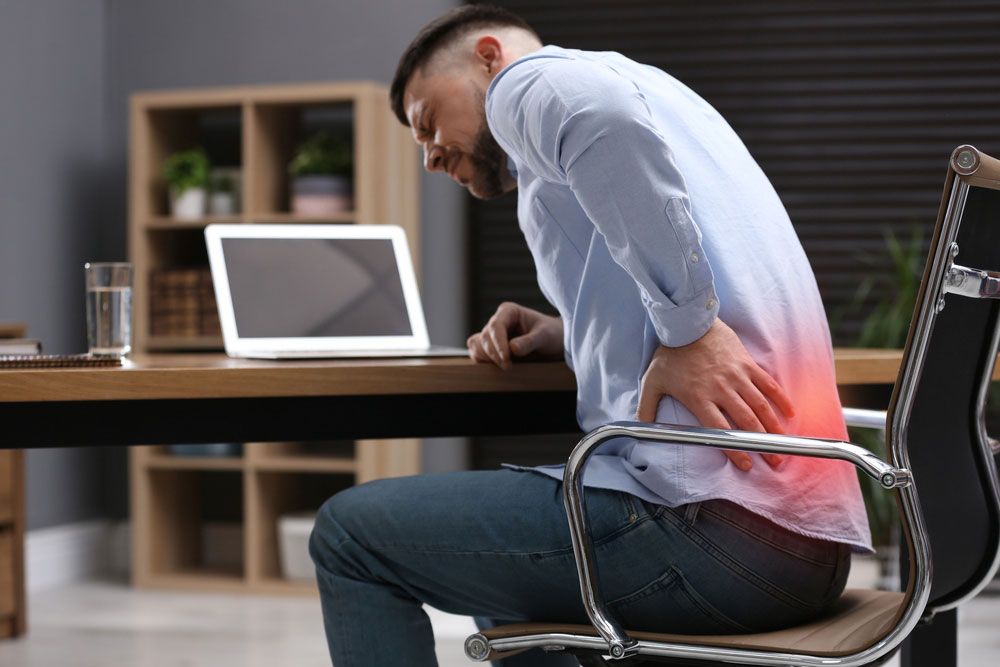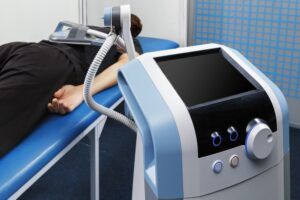Maintaining good posture is essential for spine health, yet modern life’s routines often lead to poor habits that cause back pain. As technology-driven lifestyles encourage prolonged sitting and device usage, people unknowingly adopt postures that strain their backs. Here, we’ll explore the connection between posture and back pain, offering expert-backed tips to help you enhance your posture, reduce discomfort, and boost your overall health.
The Impact of Poor Posture on Spine Health
Poor posture can develop from various habits, such as slouching, sitting for extended periods, and improper ergonomic setups at work. Over time, these habits place excessive strain on the spine and surrounding muscles. When your posture is misaligned, it can cause issues like:
- Muscle Strain: Poor posture forces certain muscles to work harder to support the body, leading to tension and discomfort in the back, neck, and shoulders.
- Disc Compression: When you sit or stand with a slouched back, it compresses the discs in your spine, potentially causing bulging or herniation.
- Joint Wear and Tear: Incorrect posture places stress on joints, accelerating their natural wear and tear, which can lead to chronic pain conditions.
How Posture Influences Back Pain
Back pain stemming from poor posture often develops gradually, manifesting as mild discomfort that intensifies over time. The spine’s natural curves are designed to distribute weight evenly, but poor posture disrupts this balance. As a result, the spine’s alignment shifts, which can cause:
- Nerve Compression: Misalignment and added pressure on the vertebrae can compress nerves, leading to pain, tingling, or numbness in the back and down the legs.
- Increased Risk of Injury: Bad posture weakens core stability, making the spine more susceptible to injuries during activities, even light ones like bending or lifting.
- Postural Fatigue: Holding a poor posture forces muscles to work harder, causing them to tire quickly, which can further aggravate pain.
Signs of Poor Posture-Related Back Pain
Identifying posture-related back pain early can help you make the necessary corrections. Watch out for these signs:
- Frequent back pain, especially after prolonged sitting
- Neck stiffness and discomfort in the shoulders
- Headaches triggered by neck tension
- Slouched or rounded shoulders
- Hunched upper back or swayed lower back
Actionable Tips for Improving Posture and Reducing Back Pain
Improving your posture involves consistent effort and awareness of how you position your body throughout the day. Here are some steps you can take to support spine health and relieve back pain:
- Practice Mindful Sitting:
- Keep your back straight and shoulders relaxed. Make sure your feet are flat on the ground, with knees at a 90-degree angle.
- Avoid slumping or crossing your legs, as this disrupts the natural curve of the spine.
- Use Ergonomic Support:
- Invest in an ergonomic chair that supports your lower back and promotes a healthy spine alignment.
- Adjust your computer screen so it’s at eye level, helping to prevent neck strain.
- Strengthen Core Muscles:
- Incorporate core-strengthening exercises, such as planks and bridges, into your routine. A strong core helps support your spine and improves posture.
- Take Frequent Breaks:
- Set reminders to stand up and stretch every 30 minutes, especially if you work at a desk. Regular movement keeps your muscles from stiffening and helps relieve tension.
- Focus on Sleep Position:
- Sleeping on your side with a pillow between your knees is one of the best positions for spine health. This posture keeps your spine aligned and reduces pressure on your back.
The Benefits of Improved Posture
Correcting poor posture can alleviate pain and prevent future injuries. Additional benefits include:
- Reduced Strain on Joints and Muscles: Proper posture keeps the spine balanced, relieving unnecessary tension on muscles and joints.
- Better Circulation: Good posture promotes healthy blood flow, which aids in nutrient delivery and toxin removal from muscles.
- Enhanced Energy Levels: Maintaining posture reduces the physical strain your body endures daily, allowing you to feel more energized and less fatigued.
When to Seek Help from a Specialist
If you’re consistently experiencing back pain despite making postural changes, it may be time to consult a specialist like Dr. Jay Reidler. Persistent pain could indicate deeper issues within the spine, such as a herniated disc or misaligned vertebrae, which require professional evaluation and treatment.
Improving posture is a journey, but with consistency, you can experience less pain and better spine health. If you’re in New Jersey and need professional guidance, Dr. Jay Reidler at Spine, Neck, & Back Specialists offers comprehensive evaluations and personalized recommendations to support your spine health. Now accepting CIGNA PPO and many more insurance plans—please contact us for more information.
Sources:
1. American Chiropractic Association (2023). Posture and Back Pain.
2. National Institutes of Health (NIH) (2023). The Effects of Poor Posture on Spine Health.
3. Mayo Clinic (2023). Tips for Maintaining Good Posture.




